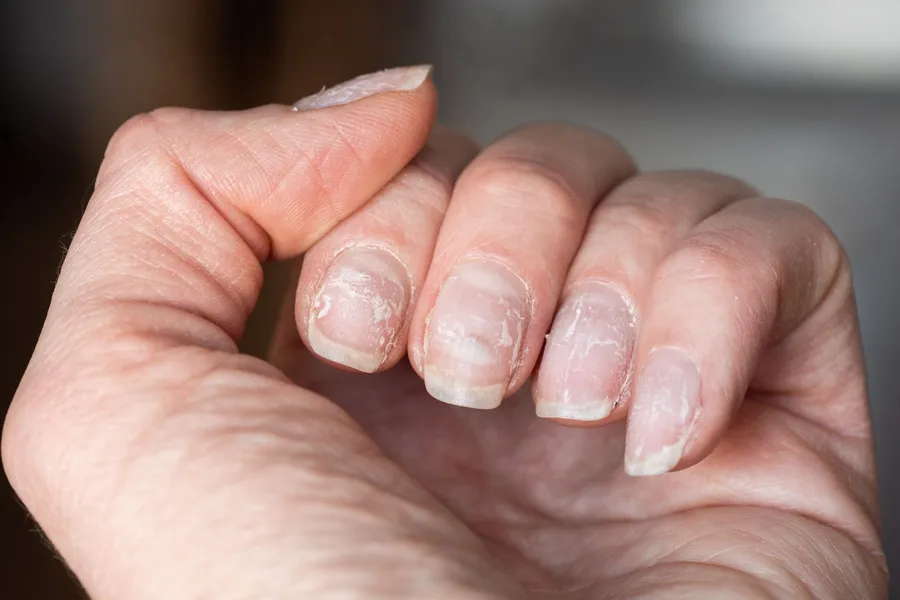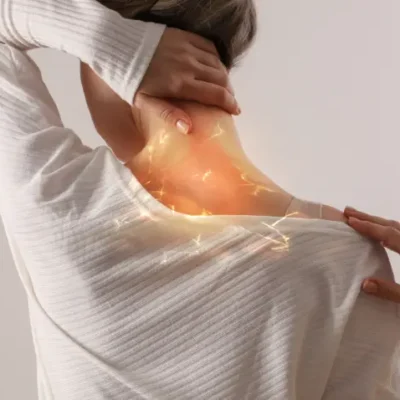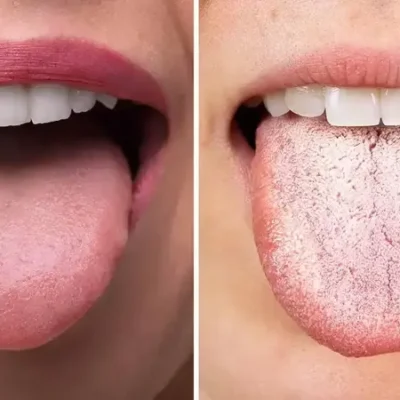A ridged nail is a nail where parallel lines in relief appear distinctly along the entire length of the nail. Ridged nails are among the most common nail problems, but rest assured: their causes have been identified and it is possible to alleviate them.
In this article, we will help you understand everything about the characteristics of this phenomenon and the care to be carried out for more beautiful nails.
Ridged nails: what do they look like?
Ridged nails are determined by perfectly straight and raised lines that form on the surface of the nails. These lines can sometimes be visible on the whole nail and on all the fingers, or in a much less uniform way. Toenails can also be affected by ridged nails.
Streaks on the nails are unfortunately a common characteristic of many people, although not everyone pays attention to them. These vertical and parallel lines can appear on both women’s and men’s nails, at any age, and more or less intensely.
Why are ridged nails a problem?
The ridges that appear on the nails run parallel and can be a problem for people who want clean, smooth nails. They prevent a natural and varnish-free manicure. Some varnishes, conversely, tend to intensify this characteristic instead of erasing it.
Nails ridged in length
Vertically ridged nails feature lines that run from the lunula of your horny plate to the free tip. According to research from 2015, lengthwise ridged nails are common in older people, likely due to slow cell turnover. However, regardless of your age, if you have other symptoms such as changes in the color, shape or texture of your nails, the cause may be a medical condition.
For example, in the case of trachyonychia (twenty-nail syndrome), the nail is not only ridged, but also rough, discolored and unevenly surfaced. Iron deficiency anemia (due to iron deficiency) can make the nails concave or curved and cause the appearance of longitudinal ridges.
[read: Foods to avoid after 50 to be healthy!]
Horizontal ridges on the nails
According to a 2018 study, when fingernail ridges are horizontal (Beau’s lines), they can be a symptom of acute kidney injury, especially if they resemble deep furrows. The 2015 research already mentioned claims that if Beau’s lines are visible on all 20 fingernails, one should be on guard for parathyroid disorders, diabetes, syphilis, respiratory conditions or zinc deficiency, among others. Keep in mind that chemotherapy can also be the cause of horizontal ridges on the nails.
Other Causes of Streaks on Nails
Logically, trauma can also cause changes in your nails. See a doctor if your injury is serious enough, otherwise just let the nail heal on its own within a few weeks. If there is discoloration, yellowing, thickening or other structural changes in the corneal plaque, your GP can refer you to a dermatologist who will diagnose the problem and suggest a treatment plan.
The causes of ridged nails
The streaks that can be seen on his nails are actually the natural streaks due to the growth of the nails. They are exaggerated in some people by internal or external factors and sometimes without them knowing other concerns.
Normal aging
Streaks on the nails are sometimes called “nail wrinkles”. Ridged nails can indeed be a consequence of aging. They can therefore increase with age, and intensify for women after menopause.
It is a natural evolution according to each person.
Minor traumas
Successive small shocks on the nails can also be a cause of streaks. If you tend to perform overly aggressive manicures, especially with the use of a polisher, this can have a counterproductive effect.
These small traumas lead to irregular growth of the nail which can be the cause of the streaks.
Deficiencies in rare cases
Above all, rest assured, ridged nails are absolutely not the reflection of a serious illness, any more than a sign of a lack of calcium.
However, the nails can be the witness of a very significant iron deficiency, which nevertheless leads to a total deformation of the nails and not only of the longitudinal lines.
Ridged nails can be, like brittle nails, the result of too regular contact with water or detergents. In order to avoid attacking your nails, it is important to use household gloves.
[read: How to care for someone with Alzheimer’s disease]
The care and treatment to be carried out
As a reminder, ridged nails are not strictly speaking damaged nails. The ridges can nevertheless intensify, adding to other problems like brittle or soft nails.
There are specific gestures that will allow you, fortunately, to improve the condition of your nails.
Smooth your nails
The streaks being on the surface and in relief, it is possible to smooth them. But, too much polishing being itself the cause of trauma to the nail which generates streaks, it is essential to limit this gesture.
So, polish your nails once a week at most. Your gesture must remain light, touching, so as not to attack the nail.
Similarly, to file the edge, opt for a glass file instead. Softer, the glass file will create less tension on the nail plate. Remember to use cuticle oil or moisturizer after using this technique.
Opt for castor oil
Even if streaks are sometimes inevitable, it is possible to slow down their intensity by allowing the nail to grow in better conditions. Castor oil is well known for nourishing and facilitating good nail growth.
Specific varnishes are also available to smooth and reduce streaks. Some are particularly rich in silicon in order to fill the spaces between the ridges. Above all, these products make it possible to superficially smooth the nails.
Which vitamins to treat ridged nails?
Vitamins and minerals that support nail health include vitamin A, vitamin C, vitamin D, iron and zinc. Group B vitamins, including biotin, and a special protein called keratin, are also highly recommended for healthy nails and, incidentally, strong, shiny hair. Without forgetting the vitamin E which we know as the vitamin of beauty.
Should you consult?
If you have ridged nails, it may be useful to consult your doctor who may be able to refer you to a dermatologist for a complete dermatological assessment. This professional will aim to understand the mechanisms that lead to streaks, especially if you are experiencing other nail problems elsewhere.
FAQ
Nail streaks can be vertical or horizontal, and can be different colors such as white, black or brown.
No, not all nail streaks are a sign of a health problem. Aging, trauma or genetics can also cause nail streaks.
To prevent nail streaks, you should avoid biting your nails, protect your nails from trauma or injury, and maintain a healthy diet.
In rare cases, nail streaks can be a sign of melanoma, a type of skin cancer. If you notice any unusual changes to your nails, such as dark or irregularly shaped streaks, it is important to seek medical attention.
If you have nail streaks, it is important to pay attention to any other symptoms and seek medical attention if necessary. A dermatologist can diagnose the underlying cause and provide appropriate treatment. Additionally, maintaining good nail care habits, such as using nail care products and protecting your nails, can help prevent further damage.
Nail streaks can be a sign of an underlying health problem or simply a result of aging or trauma. If you notice streaks on your nails, it is important to pay attention to any other symptoms and seek medical attention if necessary. With proper treatment and care, you can improve the health and appearance of your nails.





